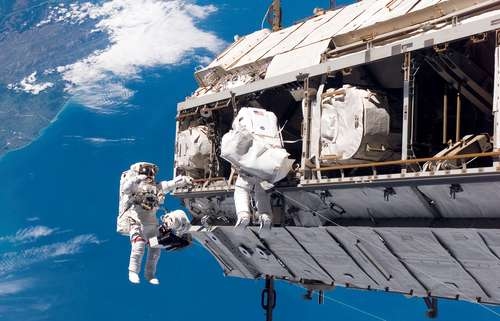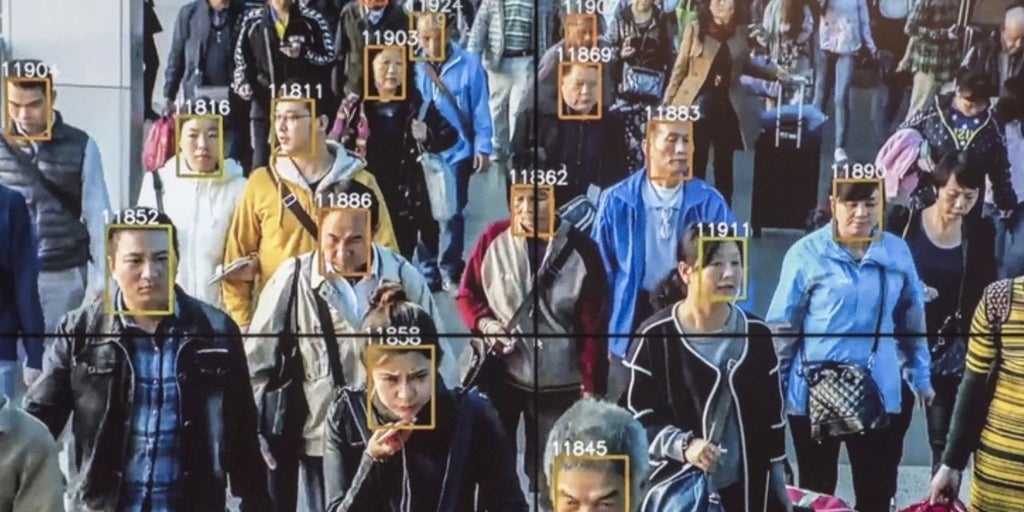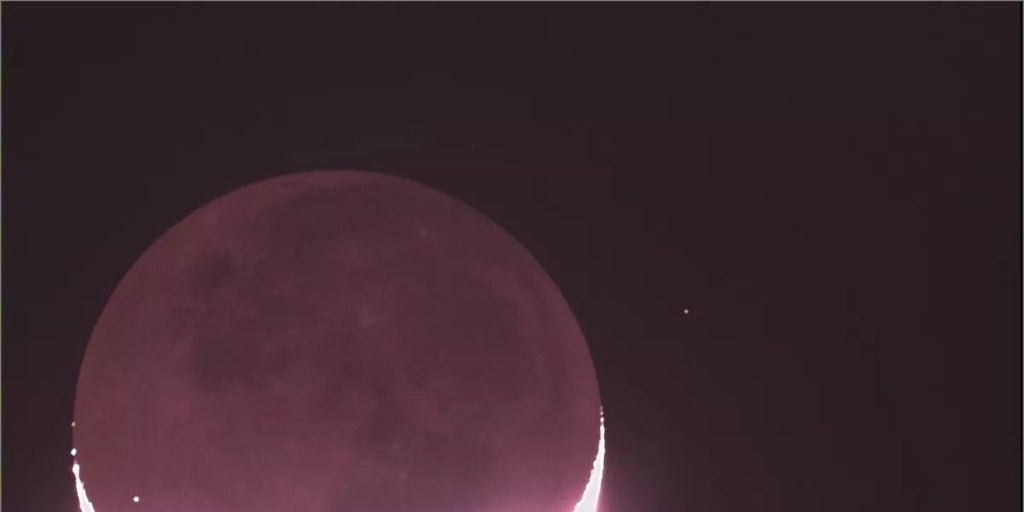Relations between the US and Russian space agencies “are quite good”: Shepherd

Relations between the US and Russian space agencies “are quite good”: Shepherd
The ISS celebrated 25 years of continuous occupation // According to NASA, 290 people from 26 countries have visited it
▲ Astronauts participate in a spacewalk during the construction of the International Space Station in 2006. New Zealand and the Pacific Ocean are visible in the background. NASA/AP Photo
Ap
La Jornada Newspaper, Wednesday, November 5, 2025, p. 6
Cape Canaveral. In an unprecedented streak, the International Space Station celebrated 25 years of continuous occupation last weekend. Its guest list over the past quarter-century includes nearly 300 people, mostly professional astronauts, but also space tourists and filmmakers.
The first full-time residents opened the hatch on November 2, 2000.
And since the scientific position only has five years left, NASA is counting on private companies to launch their own orbital stations with an even larger and more diverse clientele.
Here's a look at what's been and what's to come:
NASA's Bill Shepherd and Russians Sergei Krikalev and Yuri Gidzenko launched on a Russian Soyuz rocket from Kazakhstan on October 31, 2000. They arrived at the dark, damp, three-room station two days later and spent nearly five months aboard, making the place not only functional but also cozy.
Shepherd is part of an advisory committee for the space station along with Krikalev, now a senior Russian space official.
Although relations between the United States and Russia are "pretty bad" at the government level, "from person to person and even from space agency to space agency, they are actually quite good," Shepherd told the AP.
According to NASA's count, 290 people from 26 countries have visited the space station. Seven are there right now, representing the United States, Russia, and Japan.
Most of the visitors have flown in courtesy of their home countries.
The first to pay for his own trip, Californian businessman Dennis Tito, took off with the Russians in 2001 despite NASA's objections. Eager for cash, Russia continued to fly private clients, including a Russian film crew in 2021.
Now NASA is embracing space tourism, inviting private crews for two-week stays. A few months ago, the first astronauts in decades from India, Poland, and Hungary visited the station, accompanied by the station's first female commander, Peggy Whitson. "Space brings people together," she said.
The operations may seem easy and routine when astronauts are coming and going, but “there is nothing routine about it,” former NASA administrator Jim Bridenstine noted in a recent presentation.
Among the more serious mishaps: the near drowning of a spacewalker, a docking that caused the station to spin uncontrollably, persistent cracks and air leaks, and the ever-increasing threat of space debris.
Shepherd is surprised it's still working. "The fact that it's more than doubled its design life in many aspects is quite remarkable," he said.
Four-star hotel
Life on the space station has improved dramatically since Shepherd and his crew first visited it.
“It’s a four-star hotel now,” he said. “You couldn’t ask for better amenities, at least not in space.”
Now the size of a football field with multiple laboratories, the station has an internet phone for the astronauts' personal use and a glass dome for privileged views of Earth.
Canadian astronaut Chris Hadfield, famous for playing guitar, performed David Bowie's Space Oddity and other tunes from that lookout point more than a decade ago.
The experimental greenhouses have also added color and flavor, producing chili peppers and zinnias. Even an espresso machine had a brief trial, as did a cookie oven. But there's still no shower or laundry: only sponge baths, and dirty clothes are thrown away, not washed.
Astronauts have married and become parents while on the space station. One of the newest space dads, Mike Fincke, is back there again, more than 20 years after calling from orbit to the delivery room where his wife was.
Residents of the ISS have also dealt with grief. An astronaut's mother died in a car accident in 2007. And in 2011, Scott Kelly was halfway through a five-month stay when his sister-in-law, U.S. Congresswoman Gabrielle Giffords, was shot in the head and survived.
Others have had to endure return delays; the most recent and extreme case involved astronauts Butch Wilmore and Suni Williams. Their week-long test flight in Boeing's new Starliner capsule turned into a stay of more than nine months. NASA had to call on SpaceX for the return trip.
Thousands of experiments have been conducted, many on the astronauts themselves. Medical testing became more urgent several years ago when an astronaut developed a blood clot in his jugular vein. Doctors monitored his treatment remotely until he was safely back home.
NASA also conducted a twin study with the Kelly brothers. Scott Kelly participated in NASA's first year-long expedition in 2015 and 2016, comparing his body to that of his identical twin, Mark, on Earth. Mark Kelly also contributed to astronomy, leading a shuttle mission to deliver and install a cosmic particle detector. Upgrades are planned for next year.
NASA is paying SpaceX nearly $1 billion to lift the space station out of orbit in early 2031. The company will launch a high-capacity capsule that will dock with the ISS and guide it on a fiery return over the Pacific.
Before that happens, Axiom Space will retire the module it plans to send to the station. That free-flying module will form the core of Axiom's space station. Other companies are working on their own concepts.
NASA wants to avoid a gap between the International Space Station and its successors, preserving the United States' continuous human presence in orbit.
jornada





